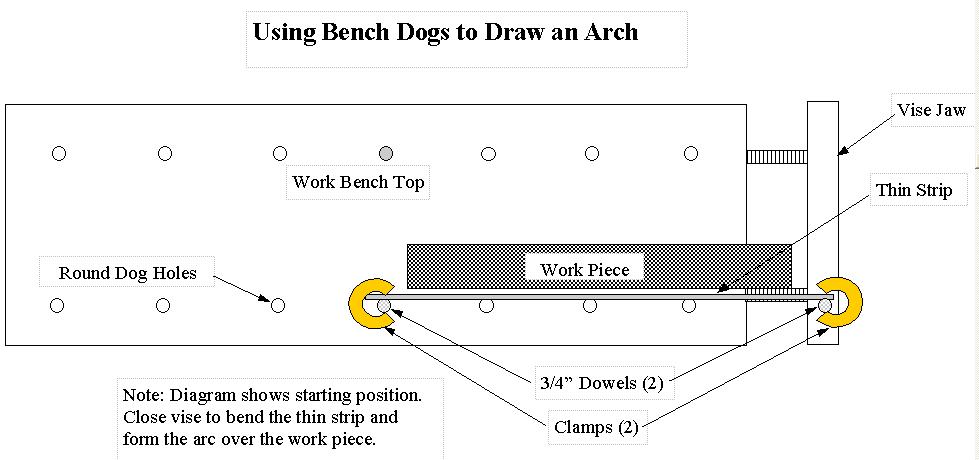
|
Drawing a big arch onto a work piece for a cutting line is always a pain with a string and a pencil and even with a big beam compass. Usually the work piece has a set length and the arch has a fixed height. There are math equations out there to find the correct radius, but sometimes this distance can be huge. You can approximate a circular arc with a bent strip and draw that, but holding the strip in a fixed position is often quite a wrestling match. This technique to end that wrestling match is one that I have used for several years since I built my workbench. Lots of WWs drill round dog holes into their bench top and vise jaw that make this technique possible. For large arches, I use the end vise (See my drawing.). For smaller arches I use the shoulder vise instead. 1) Select a uniform thin strip at least 6" or so longer than the work piece you are going to cut and 3/4" wide. A longer strip than this is fine. You can run it through the thickness planer to true it up. I usually take it down to about 3/16" thick. 2) Cut two dowels about 4" long that drop into your dog holes and can pivot freely. These should be just under the diameter of the drilled holes. If they bind a little, wax them up near the end going into the hole. 4) Open the vise about 6". Select two dog holes, one on the vise jaw and one on the top that are about 3" to 6" away from the ends of the work piece. Position the work piece right between these two dog holes and a couple of inches above them. 5) Drop the dowels into the dog holes and clamp the thin strip to each one of them. The bottom edge of the strip should be above the table and flush with the surface of the work piece. Now is when the fun starts. Start closing the jaws of the vice and start the strip bending over the work piece. As you close the vice, the dowels and clamps will pivot and the strip will bend at the same time into a perfect arch that you can trace right onto the work piece. The further you close the vise, the taller the arch. Adjust the work piece as needed; then trace. Although this arch is not an exact circular arc, it is so close that no one will probably notice or care. Save the thin strip and the dowels somewhere in the shop because you can use them as a tool over and over again. Give it a shot! Best, Edwin |


